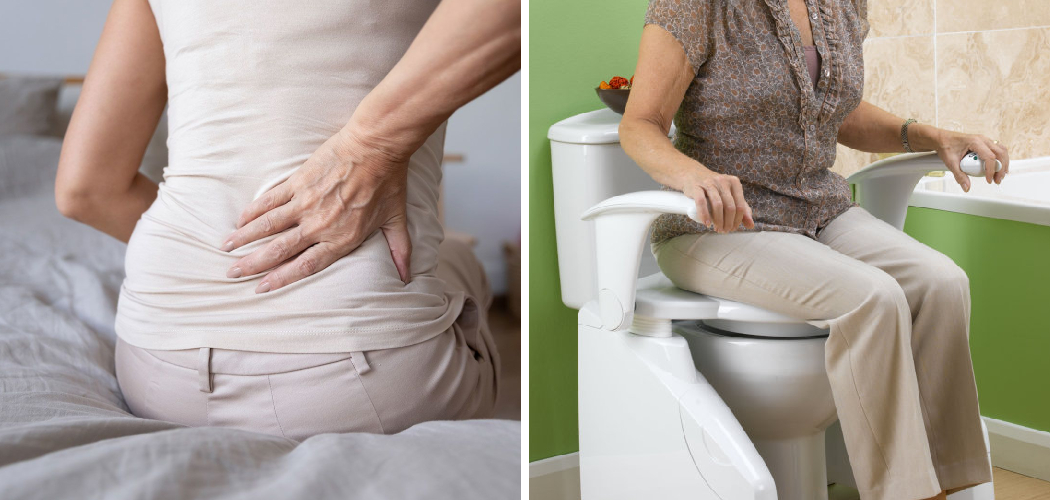Sitting on a toilet can be a real struggle when you’re living with sciatica. The pressure of your body weight on the inflamed nerve that runs through your lower back and legs can cause increased pain and discomfort. But this doesn’t mean that taking care of yourself has to be an uncomfortable experience!
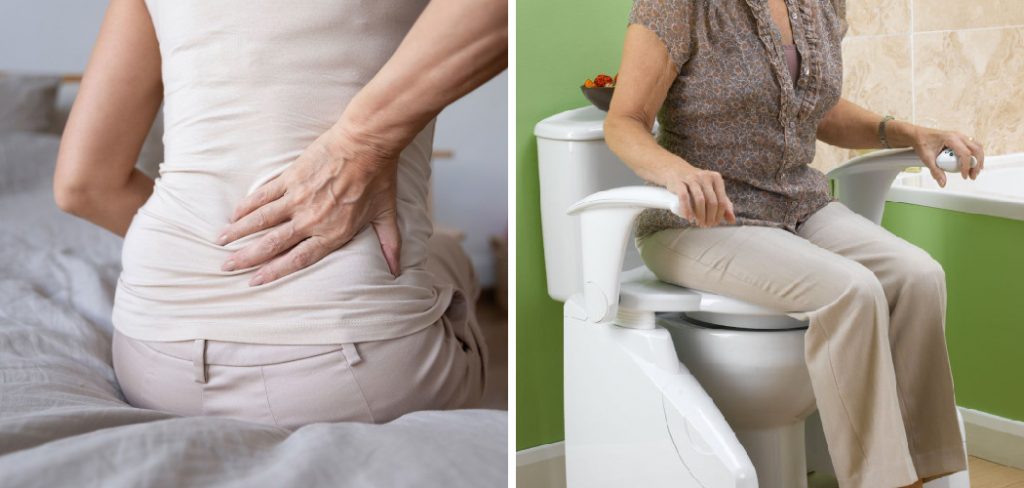
In this blog post, we’ll explore how to sit on toilet with sciatica – so you can take care of your needs without increasing your pain levels. So if you or someone you know is experiencing sciatica-related discomfort, read on for helpful tips and tricks.
10 Best Ways on How to Sit on Toilet With Sciatica
1. Invest in a Toilet Seat Riser:
Raised toilet seat can be purchased from medical supply stores or online. This is a great way to make using the restroom easier if you’re dealing with sciatica, as it raises the height of your sitting position, putting less pressure on your back and legs. The seat riser also comes with armrests for added comfort and stability.
2. Place a Pillow or Towel Between Your Legs:
When you’re sitting on the toilet, place a small pillow or folded towel between your legs to reduce the pressure on your sciatic nerve. This will help take some of the strain off your lower back and hips, making it easier to sit for longer periods of time. This method works best when combined with the toilet seat riser mentioned above.
3. Try Sitting in Different Positions:
When it comes to sitting on a toilet, there is no one-size-fits-all approach. You may find that some positions work better than others for relieving your sciatica pain. Experiment with different positions and see which one works best for you – some people prefer to sit up straight, while others prefer a semi-reclined position.
4. Place a Small Stool in Front of the Toilet:
Using a small stool can also help reduce stress on your sciatic nerve when on the toilet. You can rest your feet on the stool while using the restroom, which will reduce the amount of pressure on your lower back and legs. Placing a cushion on the stool will also make it more comfortable and provide extra support.
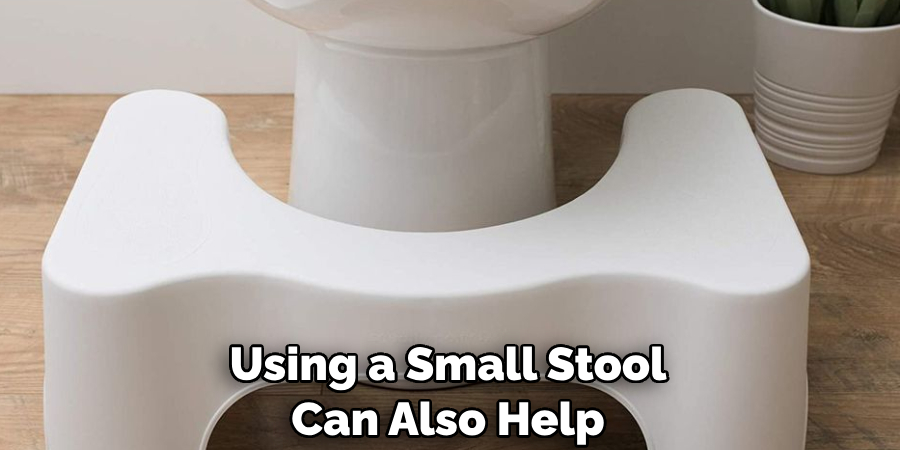
5. Put Your Feet On A Step Stool:
If you don’t have a small stool, an alternative is to use a step stool and put your feet on it while sitting on the toilet. This will help reduce pressure on your sciatic nerve and will help keep your lower back in a neutral position. It may also be helpful to place a cushion or towel on the step stool for added comfort.
6. Use a Donut Seat Cushion:
Donut seat cushions are specially designed to help reduce pressure on the tailbone and lower back when sitting. The cushion is designed to provide support and comfort while you’re taking care of your needs. This type of cushion can also be used in other situations, such as in a car or on the couch.
7. Use A Heating Pad:
Using a heating pad can also help relieve pain caused by sciatica when sitting on the toilet. Place a small heating pad on your lower back before you sit down to help relax the muscles in that area, which can reduce nerve pain. Make sure to use a low setting and monitor your skin for any signs of irritation. Using a heating pad should not be used in place of medical advice.
8. Stretch Before Sitting Down:
Before sitting down, take a few minutes to do some light stretching exercises. This will help increase blood flow and reduce tension in the muscles around your sciatic nerve, which can help make it easier to sit for longer periods of time. This will also help you feel more comfortable on the toilet and reduce pain and discomfort.
9. Practice Good Posture:
Maintaining a good posture while on the toilet is also important for reducing sciatica-related pain. Make sure to keep your shoulders and back straight, and avoid slouching or hunching over. This will help ensure that your body is in a safe and comfortable position. Practicing good posture throughout the day can also help reduce the intensity of your sciatica pain.
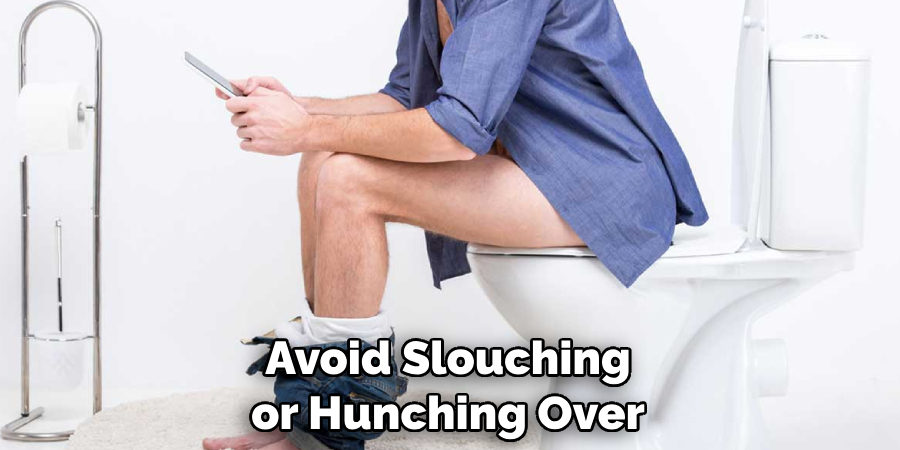
10. Use a Hand-held Commode:
A hand-held commode is a great option if you’re having trouble getting up and down from the toilet or if standing for long periods of time is an issue. This device helps you to stay in a seated position while using the restroom, reducing strain on your sciatic nerve. It’s also great for those who have difficulty balancing or need extra support when sitting down.
By taking the time to learn how to sit on the toilet with sciatica, you can make your trips to the restroom more comfortable and less painful. Be sure to invest in the products mentioned above and use them every time you sit down to help reduce your pain levels.
Additional Tips and Tricks to Sit on Toilet With Sciatica:
- Reduce pressure on the sciatic nerve by using a doughnut-shaped cushion or an inflatable cushion that helps to distribute your weight in a comfortable way.
- Make sure that your feet are flat and facing forward, with your knees slightly bent when you’re on the toilet. This ensures that your weight is evenly distributed throughout your body.
- Use a seat that is at the right height for you; too low or too high can cause more pressure on the sciatic nerve.
- Place a towel roll beneath your lower back to provide additional support and lift it off the toilet seat surface, which also helps relieve pressure.
- Use a grab bar to help you get on and off the toilet easily, which will also reduce the strain put on your lower back muscles and sciatic nerve.
- Take your time getting off the toilet; don’t rush up too quickly as this can cause sudden pain in your lower back and sciatic nerve.
- Consider investing in a raised toilet seat, which can help to reduce the pressure on your lower back and relieve any sciatica pain you might be experiencing.
- If you are having difficulty sitting on the toilet due to pain or discomfort, try using a different kind of stool instead such as a step stool or a foldable chair.
- Be sure to practice proper posture and avoid slouching when sitting on the toilet; this will help reduce pressure and pain in your lower back.
- Take frequent breaks when sitting on the toilet and move around to stretch your legs every few minutes to reduce sciatic nerve pain.
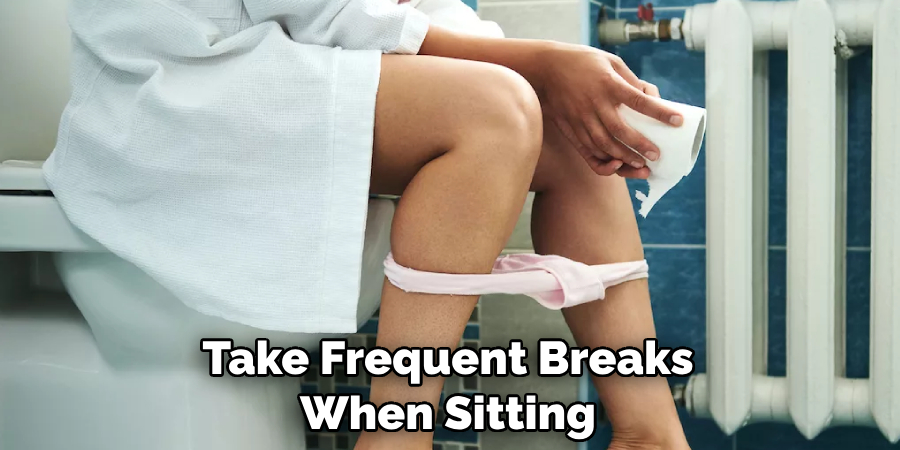
By following these tips, you should be able to sit on the toilet without pain or discomfort even if you have sciatica. It may take some trial and error to find out what works best for you, but the key is to remain patient and take breaks as needed.
With a little bit of practice, you should be able to find the perfect setup that works for your body type and helps relieve any sciatica pain you may be experiencing.
Things You Should Consider to Sit on Toilet With Sciatica:
- Assess your current bathroom set-up. Make sure you have a toilet that is the right height for you and clear space around it so you can safely move without having to twist, bend or overextend yourself.
- Invest in accessories like raised toilet seats, padded toilet rings, and grab bars that provide stability when sitting and standing. Adjustable bucket seats are also a great option for those with sciatica, as they can help take the pressure off your lower back by elevating your legs while you sit.
- Stand up after every few minutes of sitting on the toilet to relieve any muscle tension in your lower back and buttocks. This will help prevent the pain associated with sciatica from becoming worse.
- Make sure to use good posture while sitting on the toilet. Your feet should be flat on the floor, your back should be straight, and your neck and head should be in alignment with your spine.
- Use a pillow or cushion for extra support. Place it behind your lower back, between your buttocks, or along the length of your spine while sitting on the toilet. Be sure to adjust the height so you’re not leaning too far forward or backward.
- Consider taking an over-the-counter pain reliever before and after you use the bathroom, as this can help reduce the pain you feel.
- Practice deep breathing and focus on relaxing your muscles before, during, and after using the toilet to help reduce tightness in your hips and lower back.
- Take regular breaks from sitting while you’re on the toilet. This will give your muscles a chance to relax before continuing with the process.

By following these considerations, you should be able to sit on the toilet with less pain and discomfort. It is important to remember that everyone’s experience varies, so if adjustments need to be made it is best to consult your doctor or physical therapist for advice. With a little bit of preparation and practice, you can make using the bathroom an easier and more comfortable experience.
Frequently Asked Questions
Is It Okay to Sit on the Toilet With Sciatica?
Yes, it is generally safe and recommended to sit on the toilet with sciatica. Sitting on the toilet can help relieve pressure from your lower back and reduce pain associated with sciatica. It is also important to ensure you are sitting in a comfortable position to help prevent further back strain.
How Long Should I Sit on the Toilet With Sciatica?
The amount of time you should sit on the toilet with sciatica will depend on your individual needs and pain levels. Generally, it is recommended to only stay seated for short periods of time while using good posture. If you need to stay seated for longer periods of time, make sure to take frequent breaks and stretch your back muscles regularly.
What Position Should I Sit in on the Toilet With Sciatica?
It is best to sit with your feet firmly planted on the floor while using a raised toilet seat or cushioned seat if necessary. You should also sit up straight and keep your back in line with the rest of your spine. Having a cushion or a curved seat can help promote good posture while sitting on the toilet.
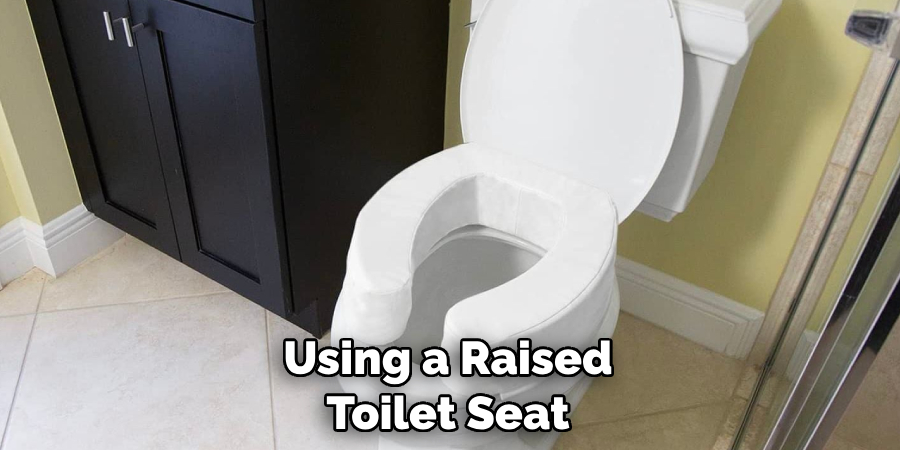
Conclusion
Hopefully, you have enough idea about how to sit on toilet with sciatica. Remember that sitting on the toilet with sciatica can be beneficial in relieving pressure from your lower back and reducing pain associated with sciatica, but it is important to ensure you are comfortable and using a good posture while sitting for short periods of time.
If you need to stay seated for longer periods of time, take frequent breaks and stretch your back muscles regularly. For best results, use a raised toilet seat or cushioned seat if necessary, keep your feet firmly planted on the floor, and sit up straight with your back in line with the rest of your spine. With these tips, you can safely and comfortably manage sciatica while sitting on the toilet.

